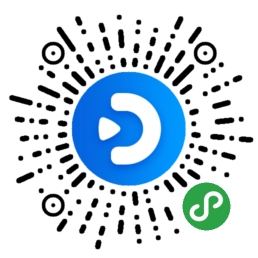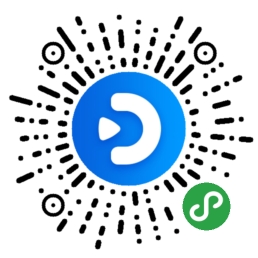Meta Platforms(META.US)2025年第一季度业绩电话会
文章语言:
简
繁
EN
Share
Minutes
原文
会议摘要
Meta reports strong Q1 2025 performance with 3.4 billion daily active users, attributing success to AI advancements across advertising, user experiences, business messaging, AI devices, and Meta AI services. Key initiatives include improving recommendation systems, integrating Lllum technology for better content understanding, enhancing Meta AI for personalized interactions, and expanding AI-enabled devices like glasses. The company also highlights successes in monetization efficiency and advertising improvements.
会议速览
Meta reports a strong start to the year with 3.4 billion daily active users across its apps, indicating solid business performance amidst macroeconomic uncertainty.
The focus is on leveraging AI to significantly enhance advertising efficiency, create more engaging user experiences, advance business messaging, develop AI devices, and pursue general intelligence. AI's role in optimizing ad targeting, generating creative content, and delivering measurable business results is highlighted, with recent tests showing increased conversion rates and greater adoption of AI creative tools by advertisers.
Improvements in recommendation systems and AI-generated content have increased user engagement on social platforms by 7% on Facebook, 6% on Instagram, and 35% on Threads, with AI enabling more interactive content and personalized experiences. As AI boosts productivity, there's an anticipated growth in time spent on entertainment and culture, expanding opportunities for engaging experiences.
The business is currently dominated by advertising and feeds on Facebook and Instagram, but with over 3 billion monthly active users on WhatsApp and over a billion on Messenger, business messaging is poised to become the next major revenue source. Countries like Thailand and Vietnam are already seeing significant commerce through messaging apps due to lower labor costs. AI is expected to make this model profitable in developed countries as well, enabling businesses to easily set up AI business agents for customer support and sales. Progress in this area will be shared in upcoming calls.
With nearly a billion monthly active users, Meta AI aims to deepen experiences, focusing on personalization, voice conversations, and entertainment, positioning AI as a pivotal service in daily life through smartphones and future glasses.
The first Meta AI standalone app, personalized and featuring a social feed, has received positive initial feedback. The strategy is to scale the product and deepen user engagement before exploring revenue opportunities through ads, premium services, and product recommendations.
The future of computing platforms lies in AI devices, particularly AI glasses that integrate AI and the metaverse, offering enhanced reality experiences. With over a billion potential users, these glasses promise to amplify AI and social experiences, as evidenced by the successful sales growth of Ray-Ban Meta AI glasses. Partnerships and new launches are expected to expand the category and introduce advanced technological capabilities. Additionally, VR accessibility improvements and AI tools are driving deeper engagement in virtual experiences.
The company has released the advanced LMA 4 AI models, highlighting their intelligence, multimodality, low latency, and efficiency. With larger models in development, the focus is on achieving full general intelligence, opening significant industry opportunities.
The company is intensifying efforts to rapidly expand capacity and infrastructure this year, with additional investments planned for flexibility in future growth. Exciting new projects and technologies are anticipated, marking a critical year for the industry, thanks to the team's hard work and dedication.
Total revenue reached $42.3 billion, marking a 16% increase, while total expenses rose by 9% to $24.8 billion. Key drivers included higher infrastructure costs, employee compensation, and legal expenses, with operating income at $17.6 billion and a 41% operating margin. Employee count grew to over 76,800, and the tax rate was 9% due to excess tax benefits from share-based compensation.
The company reported $13.7 billion in expenditures, $10.3 billion in free cash flow, and $41.9 billion in total family of apps revenue, up 16% year-over-year. Ad revenue grew 16%, with the strongest growth in Rest of World and North America. The family of apps saw over 3.4 billion daily users in March. Investments focus on developing and operating the family of apps, including WhatsApp business platform and Meta verified subscriptions.
In Q1, the family of apps saw a 10% increase in expenses to $20.1 billion, mainly due to higher employee compensation and infrastructure costs. Despite this, operating income reached $21.8 billion with a 52% margin. Reality Labs reported $412 million in revenue, down 6% YoY, attributed to lower Meta Quest sales, partly offset by increased sales of Ray-Ban Meta AI glasses. Expenses for Reality Labs rose 8% to $4.6 billion, leading to an operating loss of $4.2 billion.
The company focuses on enhancing user engagement through video content, AI-driven recommendations, and personalized AI responses, while also developing tools for creators and exploring monetization efficiency.
The focus is on optimizing ad levels within organic engagement and improving marketing efficiency through new modeling technologies and AI-powered solutions, with significant advancements in ad performance and product offerings.
The primary focus is on investing capital back into the business, with a significant emphasis on hiring technical talent and scaling up infrastructure to meet the growing compute needs for services and AI initiatives. The company also highlights the importance of increasing efficiency in workloads and the impact of AI-driven improvements on user engagement, while providing financial guidance for the upcoming quarters, acknowledging potential impacts from regulatory and macroeconomic environments.
The discussion highlights the evolving landscape of Large Language Models (LLMs) and the focus on advancements such as low latency, personalized experiences, and context window length optimization. Key areas of interest include the development of AI models like Behemoth and Lalama, emphasizing control over critical business components and infrastructure optimization. Additionally, the conversation touches on the use of AI for information gathering, social interactions, writing assistance, and visual content interaction across various platforms, with a notable mention of strong engagement through WhatsApp and Facebook.
The company discusses the evolution of AI use cases with the introduction of a standalone AI app, aiming to provide faster access and a more extensive feature set than integrated family apps. The standalone app is particularly strategic for the US market, where the company aims to lead as the primary personal AI tool, contrasting with its position in global markets where its messaging app dominates.
The company addresses uncertainties in Q2 revenue due to potential supply issues in e-commerce, particularly reduced spend from Asia-based exporters anticipating changes in de minimis exemption. It also explains significant CapEx investments aimed at building world-class infrastructure to advance AI technology and services, noting high demand for compute resources across the company and a strategy for maximum flexibility in deployment.
The increased capital expenditure outlook is attributed to higher data center investments and escalating hardware costs due to global sourcing uncertainties. The company is optimizing its supply chain to mitigate these costs and remains open to deepening partnerships for AI infrastructure, though it currently funds the training of AI models independently.
The speaker discusses AI's potential to perform tasks equivalent to a mid-level engineer by mid to late next year, accelerating progress in AI research and development. Additionally, they address a revised expense outlook, reflecting refined forecasts and increased investment in infrastructure and reality labs, while maintaining a strategic focus on key priorities despite a dynamic operating environment.
The company is working to alleviate AI capacity constraints impacting project timelines and testing, while significant investments in ad performance improvements continue, marked by strong conversion growth and innovative model architectures.
Meta is testing AI capabilities with businesses for WhatsApp, Facebook, and Instagram to enhance customer interaction and sales, focusing on customization and control for businesses. The company is also cautious about discussing capital expenditure plans beyond 2025 due to the dynamic nature of AI advancements and infrastructure needs.
The discussion explores the potential for differentiation among AI chatbots in various sectors like enterprise productivity, personal productivity, and entertainment. It highlights the importance of personalization and multimodal capabilities as competitive advantages. Additionally, it addresses the uncertainty and potential financial implications of upcoming modifications required due to EU regulatory decisions, emphasizing ongoing engagement with the European Commission.
The speaker discusses the mixed performance of various advertising verticals, noting softness in gaming and politics, and highlights the consistent losses in Reality Labs. They express optimism about the potential of AI glasses, indicating plans to scale distribution and eventually focus on monetization and efficiency.
要点回答
Q:How is AI transforming the advertising industry according to the CEO?
A:AI is transforming the advertising industry by enabling businesses to set objectives and desired outcomes, and to better target and find audiences interested in their products, including generating ad creative. It is redefining advertising as an AI agent that delivers measurable business results at scale.
Q:What are the five major opportunities that Meta is focusing on as identified by Mark Zuckerberg?
A:The five major opportunities that Meta is focusing on are improved advertising, more engaging experiences, business messaging, Meta AI, and AI devices.
Q:What improvements have been made to content recommendations on Meta's platforms and what does it signify?
A:The recommendation systems on Meta's platforms have led to a 7% increase in time spent on Facebook, a 6% increase on Instagram, and a 35% increase onThreads over the last six months, which signifies a better experience for users and more engagement on the platform.
Q:How is AI expected to change content creation and user interaction on Meta's platforms?
A:AI is expected to change content creation by enabling people to produce better content and to generate personalized content for users. User interaction will become increasingly interactive, with content in feeds that can be two-way interactive rather than passive watching.
Q:What is the role of business messaging on Meta's platforms and what potential does it have with the advent of AI?
A:Business messaging is a key area for Meta's platforms, with WhatsApp having over 3 billion monthly actives and Messenger used by over a billion people each month. The potential of business messaging is significant, especially in countries with low labor costs, and with AI, the cost issues are expected to be solved, allowing businesses to conduct commerce through messaging.
Q:What are the plans for Meta AI and what is its current focus?
A:The plans for Meta AI include deepening the user experience and making AI the leading personal AI with an emphasis on personalization, voice conversations, and entertainment. The current focus is on scaling and improving the engagement with Meta AI before focusing on revenue generation.
Q:How does Meta plan to monetize Meta AI and what is the expected timeline?
A:Meta plans to monetize Meta AI by initially building and scaling the product and then focusing on revenue once it is at scale. In the near future, there will be a large opportunity to show product recommendations or ads and offer a premium service for additional compute and intelligence.
Q:What is the significance of AI devices for the future of computing platforms according to Zuckerberg?
A:AI devices are increasingly seen as the ideal form factor for the next generation of computing platforms, as they enable users to blend the physical and digital worlds together with holograms. Glasses in particular are highlighted as the best form factor for AI and the metaverse, which will allow for deeply integrated AI experiences.
Q:What are the new developments in AI models released by Meta and what do they signify for the company's future plans?
A:Meta has released the first LMA 4 models, which are some of the most intelligent, multimodal, lowest latency, and most efficient models. With more models on the horizon, including the LaLama 4 model, Meta is signaling its commitment to leading in AI technology and the development of full general intelligence, which will underpin all of its opportunities.
Q:What is the number of employees at the end of Q1 and how did this compare to the previous quarter?
A:We ended Q1 with over 76,800 employees, up 4% quarter over quarter.
Q:What was the impact of the tax rate in the first quarter?
A:Our tax rate for the quarter was 9%, due to the recognition of excess tax benefits from share-based compensation from the increase in our share price versus prior periods.
Q:What were the total expenditures for Q1 and what drove them?
A:All expenditures, including principal payments on finance leases, were $13.7 billion, driven by investments in servers, data centers, and network infrastructure.
Q:What was the growth of the family of apps in Q1 and how many people used it daily?
A:Q1 total family of apps revenue was $41.9 billion, up 16% year over year, and we estimate that more than 3.4 billion people used at least one of our family of apps on a daily basis in March.
Q:What were the details of Q1 family of apps ad revenue and how was it distributed across different regions?
A:Q1 family of apps ad revenue was $41.4 billion, up 16% or 20% on a constant currency basis. The online commerce vertical was the largest contributor to year-over-year growth. Ad revenue growth was strongest in the Rest of World and North America at 19% and 18%, respectively. Europe and Asia Pacific grew 14% and 12% in Q1.
Q:What were the increases in family of apps expenses and the operating margins in Q1?
A:Family of apps expenses were $20.1 billion, representing 81% of overall expenses, up 10% mainly due to growth in employee compensation and infrastructure costs, partially offset by lower legal related expenses. Family of apps operating income was $21.8 billion, representing a 52% operating margin within the reality lab segment.
Q:What was the impact of family of apps other revenue in Q1 and what is the company's investment focus?
A:Family of apps Other revenue was $510 million, up 34%, driven mostly by business messaging. The company continues to direct the majority of its investments toward the development and operation of its family of apps.
Q:What is the business outlook for Q1 and what are the key factors driving revenue performance?
A:The business outlook indicates that there are two primary factors that drive revenue performance: the ability to deliver engaging experiences for the community and effectiveness at monetizing that engagement over time. The company is focusing on enhancing its core family of apps and building the next generation of devices and experiences through Reality Labs.
Q:What new features have been introduced to enhance user experience on the family of apps?
A:New features include a focus on video consumption growth across both Facebook and Instagram, especially in the US, enhancing recommendation systems, and testing the integration of AI into content recommendation systems. Instagram's new experience in the US includes a feed of content friends have interacted with, and Blend in DM to spark conversations over interests. Meta AI is being used to remember details from users' prior queries and consider their engagement across apps for better personalization.
Q:What advancements have been made with Ray-Ban Meta AI Glasses?
A:Ray-Ban Meta AI Glasses have seen a 4x increase in monthly actives from a year ago, and the number of users using voice commands is growing. Live translations have been fully rolled out to all markets for English, French, Italian, and Spanish.
Q:What are the developments in WhatsApp and its content focus?
A:WhatsApp remains a private messaging app but has evolved to include updates from accounts users follow. It has tens of billions of status views daily, and the updates tab is a focus for investment. The company launched Standalone Edits to support video creators with features like a high-resolution camera, generative AI tools, and more.
Q:How is the company optimizing ads within organic engagement and what new features have been introduced?
A:The company is optimizing the level of ads within organic engagement, improving ad supply across each service, and introducing ads on unmonitored surfaces like Threads. The focus is on increasing monetization efficiency and improving marketing performance through new ad formats and the introduction of generative Ads recommendation models for ads ranking.
Q:What new tools and features are being introduced to help businesses optimize their advertising?
A:New tools and features include incremental attribution to optimize for incremental conversions, a streamlined campaign creation flow for sales app and lead campaigns, and expanded access to video expansion and image generation for ads. Meta is also seeing strong adoption of Advantage Plus creative and is working on a new virtual try-on feature using AI.
Q:What are the two primary focuses for meeting growing compute needs mentioned in the speech?
A:The two primary focuses for meeting growing compute needs are significantly scaling up the infrastructure footprint and increasing the efficiency of workloads.
Q:What improvements have been made in AI-driven feed and video recommendations?
A:The improvements to the AI-driven feed and video recommendations have led to a roughly 8% lift in time spent on Facebook and a 6% lift on Instagram over the first nine months of the previous year, with similar gains of 7% and 6% time spent on Facebook and Instagram, respectively, achieved in just six months.
Q:What is the projected range for second-quarter 2025 total revenue?
A:The projected range for second-quarter 2025 total revenue is $42.5 to $45.5 billion.
Q:What is the updated outlook for full year 2025 total expenses and capital expenditures (CapEx)?
A:The updated outlook for full year 2025 total expenses is in the range of $113 to $118 billion, and the CapEx outlook is in the range of $64 to $72 billion, which is an increase from the prior outlook of $60 to $65 billion.
Q:What legal and regulatory challenges does the company face, and what is the impact on business and revenue?
A:The company faces legal and regulatory headwinds in the EU and the US, with the European Commission's decision that the company's subscription for No Ads model is not compliant with the DMA. This could result in a materially worse user experience for European users, a significant impact to the European business, and revenue as early as the third quarter of 2025. The company will appeal the decision but modifications may be imposed before or during the appeal process.
Q:What advancements and features have been emphasized in the development of Lama Mark?
A:The advancements emphasized in the development of Lama Mark include control over the company's destiny, optimization for their specific infrastructure and use cases, low latency experiences, voice optimization, industry-leading context window length, and personalization through context incorporation. The development also involves research and technical architecture decisions aimed at delivering a specific experience.
Q:What use cases are people engaging with Meta AI in?
A:People are engaging with Meta AI for information gathering, social interactions ranging from casual chatting to in-depth discussions, writing assistance, interacting with visual content, and seeking help. Meta AI is being used across various entry points, with strong engagement seen in WhatsApp and Facebook.
Q:How does the decision to create a standalone Meta AI app impact its utility, frequency, or scale?
A:The decision to create a standalone Meta AI app aims to provide faster access and a more built-out feature set than could be included in an existing app like WhatsApp. It is particularly important in the United States, where Meta AI is the largest surface of use, and the company hopes to establish leadership in personal AI usage. The standalone app will also continue to advance experiences across all areas.
Q:What potential supply issues were reported in the e-commerce sector and how is the company addressing them?
A:There have been reports of potential supply issues in e-commerce, and the company has acknowledged uncertainty in the macro environment's evolution and its impact on different segments of their business. The Q2 revenue outlook aims to factor in these uncertainties, and they have seen reduced spend in the US from Asia-based e-commerce exporters, which they believe is in anticipation of a de minimis exemption going away. A portion of that spend has been redirected to other markets, but overall spend is below prior levels. The Q2 outlook reflects the healthy trends seen in April, which are deemed very early to predict outcomes for the whole quarter or year.
Q:Why is the company investing more in CapEx and what opportunities does it bring?
A:The company is investing more in CapEx because they believe it provides a meaningful advantage in developing leading AI technology and services, as well as improving their core business by using more compute resources for ads and recommendations. They are having difficulty meeting the demand for compute resources across the company and plan to continually invest meaningfully in their infrastructure footprint for flexibility and to respond to market and technological developments.
Q:What drives the higher hardware costs and how is the company responding to them?
A:The higher hardware costs are driven by suppliers who source from countries around the world, and there's uncertainty due to ongoing trade discussions. The company is working on mitigations by optimizing their supply chain to handle the increased costs and is trying to reflect the potential impact across all uncertainties in their outlook.
Q:What is the company's stance on partnering for AI infrastructure build-out?
A:The company has partners investing alongside them, like AWS and Azure, who help host Llama. They are always looking for opportunities to deepen or expand those partnerships. However, they are funding the infrastructure used to train LMA and have no expectation that will change at this point.
Q:What is the progress on AI coding agents and how do they contribute to the company's efforts?
A:The company believes AI coding agents are on track to start doing a substantial part of AI research and development, potentially by the middle to end of the next year. These agents are focused on increasing recommendations across other AI products like those that do feed recommendations. If successful, it is expected to accelerate progress in those areas.
Q:What does the lowered expense outlook indicate and how does it relate to core business performance?
A:The lowered expense outlook reflects more refined forecasts including updated expectations for employee compensation and non-headcount operating expenses. The increased CapEx outlook and higher expected Reality Labs cost of goods sold also contribute to the outlook. Despite a dynamic operating environment, the company is maintaining a $5 billion range. Investments reflect significant opportunities across company priorities, and they aim to continue investing in key priorities through financial cycles, having strengthened their financial position over the last two years through efficiency work.
Q:When can we expect some easing of constraints in AI capacity and how has the business evolved post-IDFA impact?
A:The company is working hard to alleviate constraints in AI capacity and has accelerated the bringing of data center space online. The demand landscape is dynamic, and while they do not have a fixed answer for when supply will meet all demand, they are focused on increasing workload efficiency. As for ads performance and ranking, conversion growth remains strong, driven by improvements in ads ranking and modeling. The company is investing in innovations to serve more relevant ads and believes it is making progress in this area.
Q:What does the revised CapEx outlook mean for future years?
A:The revised CapEx outlook for the current year and the upcoming years indicates an acceleration in spending. The company suggests that this should be considered a new starting point for thinking about future needs and capacity, starting from 2023 onwards.
Q:What is the vision for AI integration in business as per the speaker's statement?
A:The vision for AI integration in business is that every business will soon have an AI that is an expert on their business for customers to communicate with, similar to having email, websites, and social media presences.
Q:What kind of feedback has the speaker's company received regarding the Business AIs they are testing?
A:The company has received encouraging feedback, particularly that adopting these Business AIs is saving the businesses time by helping them determine which conversations make sense for them to focus on.
Q:What is the company's approach to planning for future CapEx in the context of AI advancements?
A:The company finds infrastructure planning to be dynamic due to ongoing AI advancements and continues to identify new use cases for capacity in core AI ranking and recommendations work. It is too early to discuss plans beyond 2025.
Q:How does Mark view the competitive landscape for Meta AI?
A:Mark believes that there will be a variety of agents used for different purposes, such as enterprise productivity, personal productivity, and entertainment, each with a distinct experience. Personalization, where AI gets to know users and their preferences, and the ability to understand and respond to multimodal inputs like voice, images, and videos, will be differentiators.
Q:What modifications to their apps will be necessary in response to the EU decision, and what could be the potential financial impact?
A:The modifications to the apps are still unclear as the company is engaged with the European Commission. However, the impact on advertising revenue in the impacted geographies is expected to be 16% of worldwide total revenue in 2024. The company is actively engaged with the European Commission and hopes to have more clarity by the next quarter's call.
Q:What factors are causing the consistent losses in Reality Labs, and what is the plan to reduce these losses?
A:The losses in Reality Labs are primarily due to the upfront costs associated with developing AI glasses and other leading consumer electronics products. The company is focused on doing the work more efficiently and investing in the distribution and growth of these products. The long-term plan includes scaling beyond the initial products, achieving a sufficient scale for monetization, and building an efficient business. Some parts of the work are becoming more efficient, and the company is optimistic about the results, especially in AI glasses.
Q:Which advertising verticals experienced weakness in the first quarter according to the speaker?
A:Gaming and politics were the advertising verticals that experienced weakness, with year-over-year growth in gaming being negative and a sharp decrease in year-over-year growth in the government and politics vertical.

Meta Platforms, Inc.
Follow





